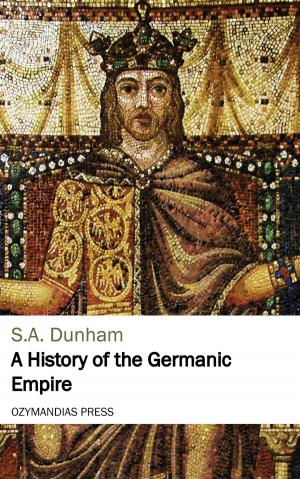The Order of the Hospital
Nonfiction, Reference & Language, Law, Construction, History, Civilization, Medieval| Author: | W.K.R. Bedford | ISBN: | 9781531288662 |
| Publisher: | Ozymandias Press | Publication: | July 9, 2016 |
| Imprint: | Language: | English |
| Author: | W.K.R. Bedford |
| ISBN: | 9781531288662 |
| Publisher: | Ozymandias Press |
| Publication: | July 9, 2016 |
| Imprint: | |
| Language: | English |
Preliminary observations are generally uninteresting and undesirable: yet there are two points which suggest themselves as to the present work requiring a few words of comment. The first of these is, that it may be deemed almost unnecessary to produce another book upon a subject so thoroughly dealt with as the history of the Order of St. John has been by writers of high ability and reputation, especially in the comprehensive work of General Porter and the able summary of the Rev. F. C. Woodhouse. As the first mentioned of these valuable books, however, last saw the light in 1884, and the other appeared in 1879, the vast increase in the work and importance of the English Order since the spread of the Ambulance movement has excited a desire to know more about its rise and progress than either volume can satisfy; for the doings of the last ten years are the legitimate sequel of a chain of events dating back to the era of the first crusade, and the home of the Ambulance work in England is still that edifice which was originally founded for similar purposes in the twelfth century. This leads to the second observation, that little field for original authorship is left to be occupied. The statements of former writers have been repeatedly examined and tested; all that can be done at the present day is to repeat facts and to summarize narrative—to lead the reader to conclusions, by directing him to unimpeachable authorities.
With regard even to the dedication of the Order it would be possible to occupy space by referring to the controversies of the seventeenth century as to the legend of a hospital, called after the Asmonean prince John Hyrcanus, already existing in Jerusalem when the pious merchants of Amalfi began to establish their charitable design of a refuge for pilgrims, and hence the choice of St. John as patron; it, however, is now generally admitted that the St. John at first adopted as sponsor was the Greek patriarch John, distinguished by the epithet Eleemon, of whose career Mr. Duckworth has recently given a short sketch, and that it was to his charitable fame that the hospital owed its ascription. This much, however, is certain, that by the time that the Crusading Army under Godfrey of Bulloin captured the holy city from the Moslem, St. John the Baptist had been adopted as the patron saint of the Hospital; and his image, already worn by patients suffering from epilepsy, became the authorized badge of those engaged in general hospital work.
The term hospital, however, did not for many years after this convey the idea of a building devoted to medical science alone, but more generally of a house of refuge. Thus the historian of Yorkshire says that at Hexton in that county was a “hospital” built in the time of King Athelstan for defending travellers from wolves, as is expressly stated in the public records...
Preliminary observations are generally uninteresting and undesirable: yet there are two points which suggest themselves as to the present work requiring a few words of comment. The first of these is, that it may be deemed almost unnecessary to produce another book upon a subject so thoroughly dealt with as the history of the Order of St. John has been by writers of high ability and reputation, especially in the comprehensive work of General Porter and the able summary of the Rev. F. C. Woodhouse. As the first mentioned of these valuable books, however, last saw the light in 1884, and the other appeared in 1879, the vast increase in the work and importance of the English Order since the spread of the Ambulance movement has excited a desire to know more about its rise and progress than either volume can satisfy; for the doings of the last ten years are the legitimate sequel of a chain of events dating back to the era of the first crusade, and the home of the Ambulance work in England is still that edifice which was originally founded for similar purposes in the twelfth century. This leads to the second observation, that little field for original authorship is left to be occupied. The statements of former writers have been repeatedly examined and tested; all that can be done at the present day is to repeat facts and to summarize narrative—to lead the reader to conclusions, by directing him to unimpeachable authorities.
With regard even to the dedication of the Order it would be possible to occupy space by referring to the controversies of the seventeenth century as to the legend of a hospital, called after the Asmonean prince John Hyrcanus, already existing in Jerusalem when the pious merchants of Amalfi began to establish their charitable design of a refuge for pilgrims, and hence the choice of St. John as patron; it, however, is now generally admitted that the St. John at first adopted as sponsor was the Greek patriarch John, distinguished by the epithet Eleemon, of whose career Mr. Duckworth has recently given a short sketch, and that it was to his charitable fame that the hospital owed its ascription. This much, however, is certain, that by the time that the Crusading Army under Godfrey of Bulloin captured the holy city from the Moslem, St. John the Baptist had been adopted as the patron saint of the Hospital; and his image, already worn by patients suffering from epilepsy, became the authorized badge of those engaged in general hospital work.
The term hospital, however, did not for many years after this convey the idea of a building devoted to medical science alone, but more generally of a house of refuge. Thus the historian of Yorkshire says that at Hexton in that county was a “hospital” built in the time of King Athelstan for defending travellers from wolves, as is expressly stated in the public records...















